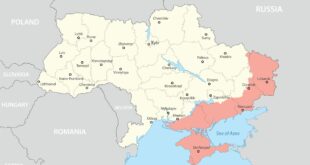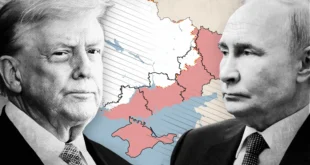To ensure digital resilience across NATO, the organization must develop a unified approach to undersea cable protection.
Summary: The crisis in the Red Sea, highlighted by Houthi assaults on commercial ships and Iran’s proxy strategies, also brings to light the critical issue of undersea cables’ vulnerability. These cables are essential for EU-Asia digital communication and trade, and their disruption could severely impact the global economy and EU’s economic security. The article discusses the strategic importance of these cables, the limited repair capacities within the EU, the geopolitical challenges of cable maintenance, and the straightforward methods by which such cables can be targeted. It underscores the necessity for comprehensive maritime security that includes undersea cable protection, urging a unified NATO approach and the exploration of alternative data routes through the Arctic for enhanced digital resilience.
The ongoing crisis in the Red Sea has generated considerable discussions and debates, primarily focusing on the detrimental effects of the Houthis assaults on commercial ships and Iran’s “creative” use of its proxies as part of its forward defense strategy. Amid these discussions, however, an equally alarming prospect has received insufficient attention: the intentional damaging of undersea cables in the Red Sea and its impact on the global economy and the economic security of U.S. allies in the European Union (EU).
The strategic significance of undersea cables in the Red Sea for EU-Asia connectivity cannot be overstated. These cables serve as the backbone for digital communication and trade between Europe and Asia, rendering them prime targets for disruption by hostile actors. From an economic perspective, the EU’s heavy dependence on fast and reliable connectivity underscores the imperative to safeguard undersea cable networks. With over 70 percent of EU-based companies relying on online services like cloud computing, it is evident that any prolonged disruption would have significant repercussions for the EU’s economic security and global trade. Given the central role of social networks in Europe’s highly digitalized societies, social life could be severely disrupted if these cables or their landing stations were to come under attack.
Any prolonged disruption could have dire consequences for the EU’s overall security. Therefore, the vulnerability of these cables to intentional damage must be a significant concern on par with the current apprehensions regarding Houthi attacks on commercial vessels traversing the Red Sea. The reason behind this assertion is twofold.
First, while the immediate threat may appear distant, policymakers and strategic planners in Brussels must recognize the potential risks associated with factorssuch as the redundancy level of cable networks, the EU’s limited repair capacities, and the possibility of simultaneous attacks on both cables and landing stations.
Ten cable systems spanning the Red Sea, Suez Canal, Mediterranean, and Indian Ocean collectively form the core of digital connectivity between mainland Europe and the trading blocs of Southern and Eastern Asia. Of particular concern in this context is the European Union’s constrained repair capacity and the recent politicization of cable projects, which are unfortunate byproducts of fast-intensifying geopolitical contestation between the United States and China.
Regarding the former, repair works are outsourced to external partners as part of the industry standard fuelled by a desire to cut costs and increase efficiency. Under the Mediterranean Cable Maintenance Agreement (MECMA), which covers the ten cable networks linking the EU with East/South Asia, the repair will be done by two cable ships stationed in Italy and France. However, due to the extensive geographical coverage area, repair capacities are notably limited, increasing the likelihood of prolonged outages in simultaneous attacks.
Low redundancy levels and a dire lack of alternative cable systems for rerouting data flow between the EU and East/South Asia pose a similar, if not more dire, challenge should the Mediterranean cables become inoperative. While not solely a consequence of the escalating digital divide between the West and China, the politicization of cable projects exacerbates this vulnerability. Initiatives like the Clean Network will likely curtail future cable projects, perpetuating the EU’s reliance on a limited number of networks and exposing it to continued outage risks. A clear illustration of this predicament is the fate of South East Asia–Middle East–Western Europe 6 (SEA-ME-WE 6), which was halted due to Washington’s objection to China’s involvement despite its predecessor, SEA ME WE 5, being a collaborative endeavor involving American and Chinese companies.
While damaging undersea cables may initially appear complex, carrying out such activities is not a sophisticated mission. Undersea cables can be targeted through various means, with physical destruction being the most common method. The least complicated approach involves “weaponizing” civilian vessels using improvised devices like anchors to cause damage intentionally. These attacks are cost-effective and do not require sophisticated undersea capabilities. Another form of physical attack is the use of undersea explosives, which can be carried out by a range of actors due to their relative ease of implementation. This method involves deploying maritime improvised explosive devices, and Iran’s Islamic Revolutionary Guard Corps (IRGC) naval branch hasmastered this capability, considering it as a cost-effective strategy in the Strait of Hormuz.
Overall, if resilience is the main pillar of digital autonomy, geopolitical instability in areas like the Red Sea poses a significant yet understudied strategic risk. Specifically, there is a genuine concern for the spillover effects of political instability whereby non-state actors and their state supporters may view undersea cables in major data chokepoints as legitimate targets for retaliation against perceived illegitimate or illegal policies or actions.
As a vital conduit for connectivity between the Indian Ocean and the Mediterranean, the Red Sea is a prime example of such a chokepoint where there is a potential for Iran-backed Houthi rebels to redirect their focus from passing vessels to targeting undersea cables as a more cost-effective and discreet form of offense. While there is currently no indication of intent from the Houthi leadership or the Iranian government to undertake such actions, it is imprudent to discount the plausibility of such a scenario in the future.
Moreover, the mere prospect of such hostile actions serves as a crucial reminder that maritime security in our fast-approaching digital era needs a rethink. Specifically, maritime security seems no longer confined to securing sea lanes of communication but also encompasses safeguarding what lies beneath, including undersea cables and critical mineral resources necessary for the green transition. This underscores the need for comprehensive approaches to maritime security that address both traditional and emerging threats.
For their part, the United States and its European allies must utilize their common NATO membership and develop a unified approach toward enhancing the security and resiliency of undersea cables. Currently, divergent approaches exist across the Alliance, with countries like France adopting a national security approach, leveraging their armed forces and security apparatuses to safeguard undersea infrastructure, while others like Denmark adopt a more industry-led approach. However, to ensure digital resilience across the Alliance, there is a pressing need for a unified NATO approach to undersea cables.
Additionally, the EU needs to scale and speed up efforts at diversifying data routes connecting Europe to Asia, especially considering the demand for fast and reliable data is set to rise. In this regard, Brussels should collaborate more systematically with its Nordic members, namely Norway, Sweden, and Finland, to expedite various connectivity initiatives at laying undersea cables to connect Europe with Asia via the Arctic. While technically challenging and financially demanding, undersea cables passing through the Arctic offer several advantages. They are shorter and, therefore, faster than those passing through the Red Sea, less susceptible to damage by natural causes, and face fewer intentional threats due to the limited passage of vessels in the Arctic. Most importantly, transforming Northern Europe into a data hub presents the EU with a reliable alternative and represents a significant step toward achieving its digital autonomy objectives, despite the potential for these cables to be subject to malign activities from Moscow.
 Geostrategic Media Political Commentary, Analysis, Security, Defense
Geostrategic Media Political Commentary, Analysis, Security, Defense





